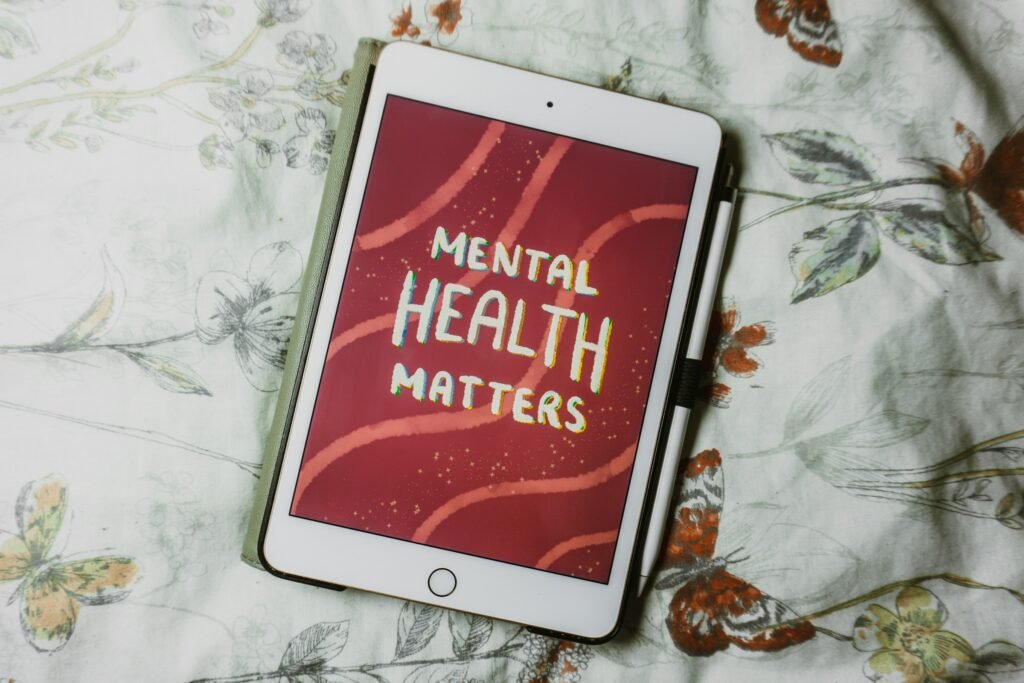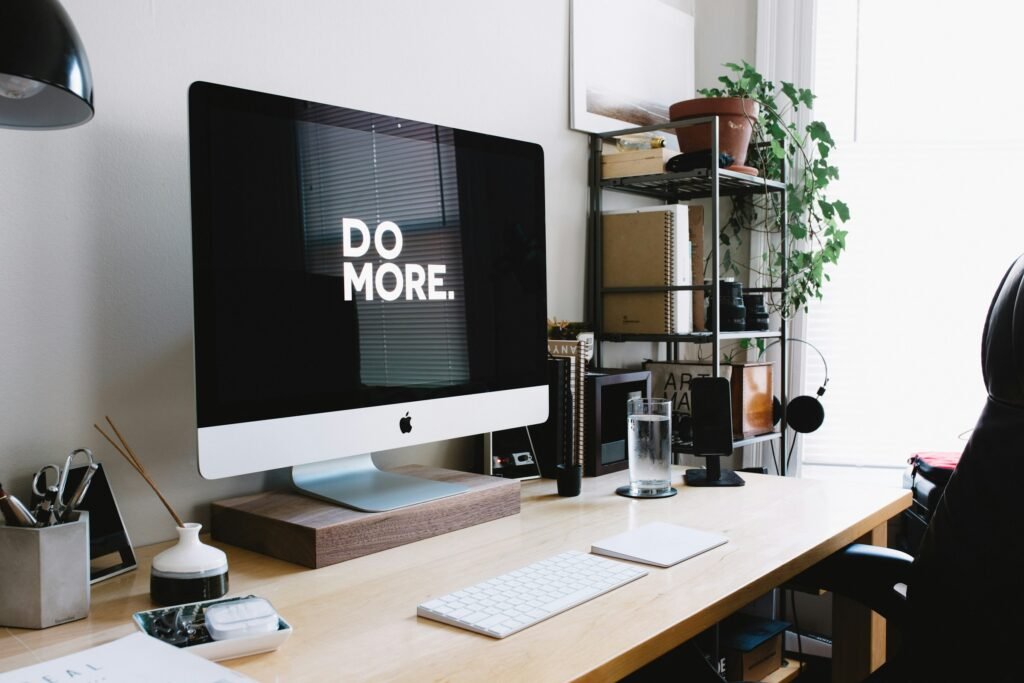
Introduction to Digital Detox and Mindfulness
In today’s fast-paced, technology-driven world, the need for individuals to engage in a digital detox has grown increasingly apparent. As our lives become entwined with our devices, the constant bombardment of notifications, messages, and social media interactions can lead to heightened stress levels and a diminished sense of personal well-being. A digital detox entails intentionally stepping away from these devices for a designated period, allowing individuals to rediscover the importance of real-world interactions, self-reflection, and mental clarity. This practice is vital for restoring balance and enhancing one’s overall quality of life.
Concurrently, mindfulness practices have risen in popularity as effective tools to combat the stressors associated with our digital lives. Mindfulness involves cultivating a heightened awareness of the present moment through various techniques such as meditation, deep breathing exercises, and mindful movement. By integrating mindfulness into our daily routines, we can alleviate anxiety, enhance emotional resilience, and foster a deeper connection with ourselves and our surroundings. Together, digital detox and mindfulness offer a holistic approach to reducing the noise of our connected world while promoting inner peace and clarity.
This blog post will delve into the benefits of these transformative practices, illustrating how embracing a digital detox and mindfulness can lead to a healthier, more budget-friendly lifestyle. Not only do these approaches encourage improved mental health, but they also present an opportunity to reconnect with oneself and prioritize what truly matters — free from the distractions and pressures of modern technology. Through understanding the necessity of stepping back and taking control, individuals can cultivate a more meaningful existence without the burden of additional financial costs.

Understanding Digital Detox: What It Is and Why It Matters
In an increasingly connected world, a digital detox has become a vital practice for many individuals seeking balance in their lives. A digital detox refers to a period during which a person refrains from using electronic devices such as smartphones, computers, and tablets. This practice often includes taking breaks from social media and technology-driven activities, ranging from short intervals to designated technology-free weekends. The primary objective is to allow individuals to retreat from the incessant notifications and overstimulation that technology often brings.
The rationale behind undertaking a digital detox stems from the growing awareness of the adverse effects of excessive screen time on mental health. Numerous studies have highlighted the correlation between high levels of digital engagement and increased feelings of anxiety, depression, and stress. By embracing a digital detox, individuals are afforded an opportunity to disconnect from the constant flow of information and distractions, enabling them to refocus on their mental well-being. During such breaks, participants often report enhanced clarity and increased feelings of peace, which are crucial for fostering a productive mindset.
Moreover, a digital detox significantly encourages the cultivation of real-life connections. As people reduce their screen time, they often find themselves more present in social environments. This shift can lead to deeper interactions and the strengthening of relationships, which are frequently compromised by the habit of remaining engrossed in mobile devices. The absence of digital interruptions allows individuals to engage more meaningfully with family and friends, thus paving the way for authentic experiences that enrich their lives.
In essence, understanding digital detox is not merely about removing technology from our lives; it is about optimizing our mental health and enhancing our connections with the world around us. This practice promotes a healthy balance that can lead to a more fulfilling lifestyle.
Benefits of Digital Detox for Mental Health and Well-being
In today’s fast-paced world, our lives are heavily intertwined with technology, leading to a constant barrage of information and distractions. This dependency can contribute significantly to increased anxiety levels, reduced attention spans, and impaired sleep quality, which is where the practice of digital detox becomes essential. Engaging in regular digital detox practices can afford numerous mental health benefits.
One of the primary advantages of reducing screen time is the marked decrease in anxiety. Research indicates that social media platforms often exacerbate feelings of inadequacy and anxiety due to constant comparisons with others. By taking time away from these digital spaces, individuals can regain a sense of control and foster a healthier self-image. A study published in the Journal of Social and Clinical Psychology demonstrated that participants who decreased their social media use reported lower feelings of loneliness and anxiety after three weeks.
Furthermore, digital detox can significantly enhance focus and cognitive function. When individuals immerse themselves in technology for extended periods, they often experience diminished attention spans. By stepping back from screens, one can cultivate an environment conducive to deeper concentration and productive engagement with tasks at hand. For example, scholars and students who have incorporated periods of digital disengagement report improved retention rates and better academic performance.
Another crucial benefit of a digital detox is its potential to improve sleep quality. Excessive screen time, particularly before bedtime, can disrupt circadian rhythms and throw off natural sleep patterns. Limiting technology usage in the evening allows the mind and body to unwind, leading to better sleep. A recent study found that participants who adhered to a screen-free hour before bed experienced a notable improvement in their overall sleep quality.
Lastly, the commitment to regular digital detox practices fosters enhanced emotional regulation. By disconnecting from the incessant digital chatter, individuals can develop more profound self-awareness and a more balanced emotional state. They are better equipped to respond thoughtfully rather than react impulsively to stressors, ultimately nurturing a stronger sense of well-being. Overall, embracing digital detox practices carries extensive mental health benefits, emphasizing the importance of intentionally setting aside technology in our daily lives.
Mindfulness Practices: A Path to Inner Peace
Mindfulness practices encompass a range of techniques that encourage individuals to focus their attention on the present moment while cultivating a non-judgmental awareness of their thoughts, emotions, and physical sensations. These practices are designed to enhance mental and emotional health by fostering greater self-awareness and stress reduction. By engaging in mindfulness, individuals can develop a deeper understanding of their inner experiences, which can lead to improved overall well-being.
One of the most well-known mindfulness techniques is meditation. This practice involves setting aside a specific time each day to sit in silence, focus on the breath, and gently observe thoughts as they arise without attachment. Regular meditation has been shown to decrease anxiety levels, improve concentration, and enhance emotional resilience. By prioritizing mental tranquility, individuals can experience increased clarity, enabling them to make more informed decisions regarding their lifestyles, particularly when navigating the complexities of the digital age.
Another effective technique is deep breathing exercises. These exercises involve taking slow, intentional breaths, often in conjunction with visualization or affirmations. Engaging in deep breathing can significantly lower stress levels, allowing practitioners to cultivate a sense of calm amidst daily challenges. Furthermore, the practice helps ground individuals in the present moment, limiting the negative impacts of external distractions.
Mindful walking is another valuable practice, which encourages individuals to engage with their surroundings as they walk. By paying attention to each step, the sensations in the feet, and the rhythm of the breath, practitioners can experience a profound connection with nature and their environment. This technique not only serves as a form of physical exercise but also allows for moments of reflection and peace, making it an ideal complement to digital detox initiatives.
Incorporating mindfulness practices into daily routines can provide numerous benefits, including enhanced self-awareness and stress reduction. By embracing these techniques, individuals can move towards a more balanced, healthier lifestyle while fostering a deeper sense of inner peace.

How Digital Detoxes and Mindfulness Practices Go Hand-in-Hand
The growing dependence on technology has led many individuals to experience heightened levels of stress and anxiety. To combat this, digital detoxes and mindfulness practices have emerged as effective strategies to promote mental well-being. These two methodologies are not simply complementary; they create a synergistic relationship that can profoundly transform one’s approach to everyday life.
A digital detox involves intentionally unplugging from electronic devices, such as smartphones, computers, and social media platforms. This break provides an opportunity for individuals to step back from constant notifications and digital distractions, which often detract from present-moment awareness. By reducing screen time, one becomes more attuned to their surroundings, enhancing their ability to fully engage in both personal and professional interactions.
Mindfulness, on the other hand, is the practice of focusing on the present moment and cultivating awareness of one’s thoughts, feelings, and sensations without judgment. It encourages individuals to reflect on their experiences, fostering emotional regulation and resilience. When combined with a digital detox, the benefits of mindfulness can be magnified; without the lure of digital devices, individuals are freer to engage in activities such as meditation, yoga, or simple observation of their environment. This very focus on the here and now aligns seamlessly with the core principles of mindfulness.
Incorporating both a digital detox and mindfulness practices into one’s routine can yield significant advantages for mental health. The reduction of technological interference creates a fertile environment for the cultivation of mindfulness, enabling a deeper connection to oneself and the world around them. Ultimately, this integrated approach not only helps in achieving a balanced lifestyle but also contributes to long-term emotional stability and peace of mind.
Budget-Friendly Ways to Implement Digital Detox and Mindfulness
In today’s digital age, finding ways to engage in digital detoxes and mindfulness practices without straining one’s budget is essential. Fortunately, there are a multitude of low-cost or even free resources available to help individuals embrace a healthier lifestyle while also disconnecting from the constant technological stimulus. One effective way to begin is to explore various mindfulness apps that offer free versions or trial periods. Applications such as Insight Timer and MyLife provide guided meditations and mindfulness exercises that can be accessed without spending any money. These platforms are designed to support users in their journey towards achieving mental clarity and reducing distractions caused by digital devices.
Additionally, local community centers often offer programs that promote mindfulness and wellness. Many of these centers host free or low-cost workshops, classes, or support groups that focus on meditation or holistic health. Engaging in these community resources can not only help individuals develop a consistent mindfulness routine but also foster connections with others seeking similar goals. Such social support can enhance the detox experience, making it more enriching and impactful.
Nature-based activities also provide an excellent alternative for digital detoxing. Taking regular walks in local parks, practicing yoga outdoors, or simply spending time in green spaces can significantly alleviate the urge to reach for one’s phone. Nature has a calming effect, which fosters mindfulness and alleviates stress. Additionally, allocating specific times during the day for outdoor activities can serve as a powerful reminder to disconnect from screens and reconnect with oneself.
Implementing small, manageable daily routines can also facilitate a digital detox. Designating certain hours as ‘screen-free’ times or engaging in activities like reading, journaling, or drawing can support a singular focus and enhance overall well-being. These practices do not require significant financial investment, proving that a fulfilling and mindful lifestyle can be achieved without excessive spending.
Challenges and Solutions in Practicing Digital Detox and Mindfulness
In today’s technology-driven society, individuals often encounter several challenges when attempting to engage in digital detox and mindfulness practices. One of the key hurdles is the pervasive addiction to technology. Many people find themselves unable to disconnect from their devices, as smartphones, tablets, and computers have become integral to daily routines. This dependency not only affects personal well-being but also hampers the ability to engage in mindful activities.
Another significant challenge stems from societal pressures. We live in an era where constant connectivity and responsiveness are often expected, making it difficult to prioritize moments of quiet reflection. Many feel the need to be reachable at all times, which can lead to guilt and anxiety when attempting to embrace a more mindful lifestyle. Additionally, the fear of missing out on social engagements or important news can reinforce the compulsion to stay online.
Lack of time is yet another barrier that people frequently cite when considering a digital detox. The busy nature of modern life often leaves little room for self-care practices, resulting in feelings of overwhelm. With numerous responsibilities to juggle, individuals may feel that committing time to mindfulness or digital detox is not feasible. However, it is essential to note that mindfulness can be integrated into even the most hectic schedules.
To address these challenges, individuals can implement practical solutions. Setting specific goals, such as designated no-phone hours or engaging in short mindfulness exercises, can help reduce reliance on devices. Creating a supportive environment, free from notifications or distractions, is crucial for fostering a commitment to digital detox. Prioritizing small but meaningful activities, such as a 5-minute meditation or a walk without devices, can also promote mindfulness within a busy lifestyle. By taking incremental steps, individuals can gradually reshape their relationship with technology and enhance their overall well-being.
Success Stories: Real-Life Testimonials
In recent years, many individuals have taken the initiative to embrace digital detox and mindfulness practices, experiencing transformative changes in their lives. One compelling story comes from Sarah Thompson, a 32-year-old marketing professional who struggled with constant distractions from her smartphone. By committing to a monthly digital detox, Sarah was able to reclaim hours previously consumed by social media and notifications. This time was reinvested into activities that brought her joy, such as painting and yoga. Not only did her mental clarity improve, but she also found that engaging in these offline pursuits enhanced her emotional well-being.
Another inspiring example is Michael Rodriguez, who had felt overwhelmed by the pressures of modern life. After attending a community workshop on mindfulness, he began practicing daily meditation and carving out tech-free zones in his home. Michael reported a significant reduction in anxiety levels, stating that mindfulness helped him reconnect with the present moment. This shift not only improved his mental health but also positively influenced his relationships, as he was more present and engaged with family and friends.
Lucy Wang’s experience highlights the financial benefits of embracing a digital detox. Once an avid online shopper, she realized that her impulsive buying habits were financially draining. Recognizing this, Lucy decided to take a break from online shopping and social media influence. By doing so, she not only gained better control over her finances but also found fulfillment in exploring local markets and thrift shops, which offered unique finds without breaking the bank.
These captivating testimonials showcase the diverse paths individuals have taken toward a healthier lifestyle through digital detox and mindfulness. They serve as powerful reminders that re-evaluating one’s relationship with technology can lead to significant improvements in mental health, overall well-being, and financial health. The journey may present challenges, but the outcomes are well worth the effort.
Conclusion: Embrace a Healthier, Tech-Free Lifestyle
To cultivate a healthier and more fulfilling life, it is essential to acknowledge the pervasive presence of technology in our daily routines. As we have explored throughout this blog post, the constant engagement with digital devices can lead to a range of physical and mental health challenges. By embracing digital detox and mindfulness practices, individuals can regain control over their well-being and create a necessary balance between the virtual world and real-life experiences.
The concept of a digital detox encourages individuals to step away from screens and engage in activities that promote physical health, emotional stability, and mental clarity. Simple initiatives such as scheduled breaks from technology, mindful breathing exercises, or outdoor walks can significantly enhance one’s quality of life. Implementing these practices may require commitment and discipline, but the benefits are undoubtedly rewarding, leading to improved mental health and stronger interpersonal relationships.
Additionally, integrating mindfulness practices into daily life can help individuals reconnect with their inner selves and foster a sense of tranquility amidst the chaos of the digital age. Techniques such as meditation, yoga, or journaling inspire personal reflection, paving the way for enhanced emotional regulation and stress reduction. This holistic approach encourages individuals to not only disconnect from technology but also to reconnect with themselves, ultimately fostering a profound sense of well-being.
As you reflect on your relationship with technology, consider committing to regular digital detoxes and exploring mindfulness practices. These changes, though seemingly simple, can be transformative and promote a healthier, budget-friendly lifestyle. Remember, achieving a balanced life is not only attainable but also a worthwhile journey worth embarking upon. Your journey towards a healthier, tech-free lifestyle starts today.
